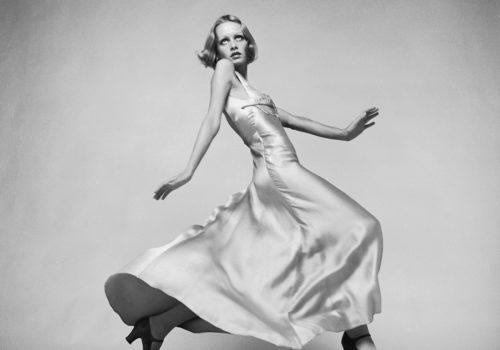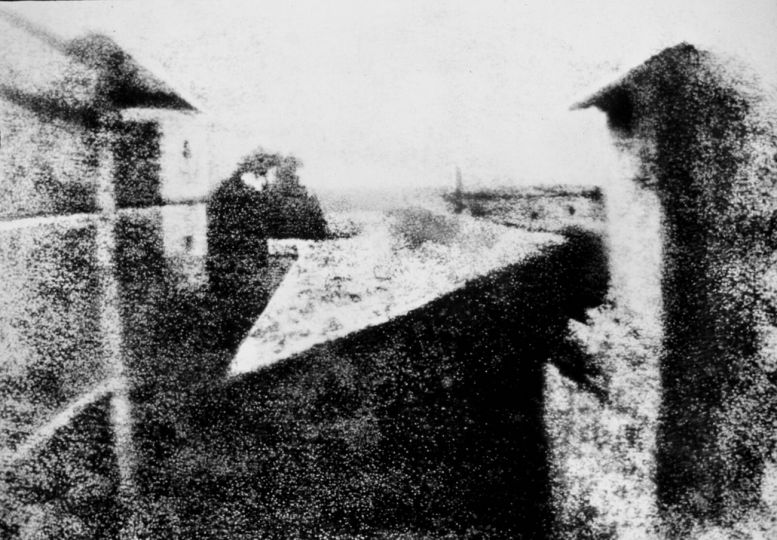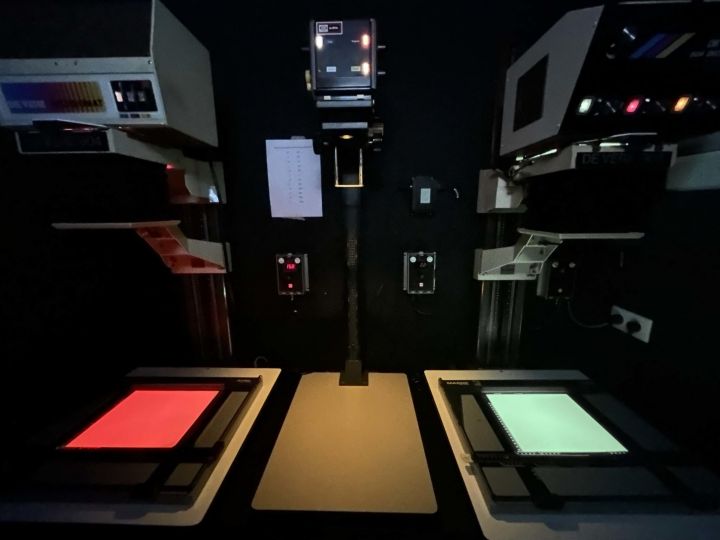In his photography, Justin de Villeneuve captures the heart of the swinging 60’s in London, a youth-obsessed period defined by a revolutionary freedom of expression. The energy of the period was reflected in the world of fashion and music, exemplified by Twiggy and David Bowie, two cultural icons who became symbols of creativity and defiance of traditional notions of gender and sexuality. Justin de Villeneuve’s pastel-filtered photographs of these two icons capture their individuality and their cultural significance.
The 1960’s was a period of immense social change; the teenagers and young adults coming of age in the 1960’s were born and raised in a time of prosperity in contrast to their parents, who lived through world wars and economic depression. With a liberal government coming in in 1964, censorship was relaxed, and a more permissive British society saw a rise in social movements such as feminism and the gay rights movement. Young people had more time, money, and freedom to explore their identities, and to stand in rebellion to the aspects of society they felt were outmoded.
The times allowed young people to not only explore their identity, but actively create it. The 1960’s saw the rise of youth subcultures like beatniks, rockers, bikers, and hippies, who were defined by the clothes they wore and the music they listened to. You could change who you were and how you related to the world with a shopping trip. This looseness and fluidity was reflected in the creative minds of the time, who constantly reinvented themselves.
Justin de Villeneuve was born Nigel Jonathan Davies in London in 1939. Curious and enterprising, he constantly created new identities to get ahead in life. He was a boxer, a profession which fostered his criminal side, leading him to trade black market goods and smuggle bottles of wine for Vidal Sassoon’s wedding which “tasted like paint stripper” but impressed guests with the vintage labels he’d put on them. The latter job landed him a role as a hairdresser in Sassoon’s Mayfair salon, which fostered another identity change; he assumed the name of Christian St. Forget, thinking he needed a French name to fit the role of a high-society hairdresser. He was also a bodyguard, an auction barker, a bookmaker, an erotic film salesman, an antique dealer, an interior designer, and a singer, taking on new names and personas to fit each profession, though he is best known for being a photographer and for his personal and professional relationship to supermodel and “swinging 60’s” cultural icon, Twiggy.
Justin de Villeneuve met Lesley Hornby by chance in the early 1960’s. The aspiring model came into his friend’s salon, where de Villeneuve convinced her to chop her hair into the signature pixie; he immediately saw the potential for him to reform her identity, and his own with it. He assumed the role as her manager, shedding his hairdressing persona for a new one: Justin de Villeneuve, a French-sounding name co-opted for its cultural capital. The teenaged Lesley became Twiggy, androgynous, mysterious, and snappy. He then set out to get her behind a camera. Of course, no one else could photograph the icon-to-be, he only trusted his own eye. Thus, Justin de Villeneuve was born again as a photographer.
De Villeneuve didn’t have photography experience, but he did have a precise eye, an ability to blend into any social scene, and a relationship with photographer Richard Avedon who helped him set up a studio. By 1965, he was not only Twiggy’s manager but also her boyfriend. The next year, Twiggy was declared “the face of 1966” by the Daily Express. She would dominate the fashion world for the next several years.
In 1973, David Bowie’s 6th album Aladdin Sane had just been released, referencing Twiggy as “Twig the Wonder Kid” in the song “Drive in Saturday.” David Bowie was a force in the 1960’s, constantly reinventing himself not only aesthetically, but with entire personas in a manner not dissimilar to de Villeneuve’s own chameleonic shifts in identity. Bowie’s changing persona allowed him to explore sexuality and expression, to the adoration of a devoted group of subculture-aligned fans.
Bowie wanted to be the first man on the cover of Vogue, and Justin De Villeneuve proposed he pose with Twiggy and negotiated the cover with Vogue. However, Bowie’s ambitions for the photographs changed when he saw them, and he now wanted them for his new album cover Pin Ups. Justin de Villeneuve, in a move consistent with his opportunistic, ever-changing past, went back on his agreement with Vogue, ruining his relationship with the magazine forever. A few weeks later, he and Twiggy were driving down Sunset Boulevard and when they passed a 60-foot billboard depicting the iconic photo of Twiggy and Bowie on the cover of Pin Ups. That’s when the photographer knew he had made the biggest risk but also the best decision of his career.
The cover of Pin-Ups features Twiggy leaning on the shoulder of David Bowie. Everything about the photograph shimmers: their skin has a pearlescent glow, their faces outlined in makeup masks have an intense shine, the gold beads on Twiggy’s headpiece catch the light. Despite the softness of the image, there is something visceral and intense about it, caught in the eyes of the stars; while Twiggy gazes softly at the camera, her eyes are leveled straight ahead, while Bowie locks the viewer in an intense, wide-eyed gaze. The spotlights mirror in the blue of their eyes. Although the photograph is surreal with its pastel color palette and ethereal styling, there is something very intimate about its simplicity, the power of their gazes with minimal styling.
While the images are compositionally simple and elegant, the styling is subtly exaggerated in the context of these icons. Justin de Villeneuve was always at work creating personas, and these images are case studies. Bowie’s face is expressionless, emphasizing the angularity of his features and the harshness of his expression. The makeup is abstract, a nod to Bowie’s extreme personas on stage. Bowie’s hair strikes a balance between feminine and masculine, speaking to his experimentation and sexual openness. Although Bowie is stripped of costuming, the force of his presence and the key elements of his artistry are all conveyed through the expert eye of Justin de Villeneuve. Twiggy is also angular and androgynous, consistent with the thin, childlike beauty she ushered into the fashion world. Yet, she is softer than Bowie; with a gold-adorned headpiece and more shimmering, softening makeup, the image captures the balance between femininity and masculinity which were her signature.
These images have the staying power they do because they capture the essence of the icons that have become part of our cultural consciousness, even in a stripped, minimal form. While we associate Bowie with theatrical shows, dramatic makeup, and bold fashion, and Twiggy with a playful, childlike take on high-couture, the key elements of their identities shine through. The 60’s was a time when identity was visual, and therefore could be shifted with the right aesthetics. De Villeneuve was a master at forming identity, choosing the right signifiers for any persona he wanted to assume. He was able to not only cultivate this shape-shifting for his own purposes, but turn it on others with a camera, drawing out their most defining features and solidifying them as unique and iconic. His mastery shines in the images of Twiggy and David Bowie, two icons of the 60’s who tapped into fluidity to take full advantage of everything the decade had to offer.
Marie Audier D’Alessandris
Marie Audier D’Alessandris is the founder of The Selects Gallery founded in February 2018 in New York as a platform to discover, learn and acquire the fine art photographs of the best fashion photographers in the world.
@theselectsgallery
















